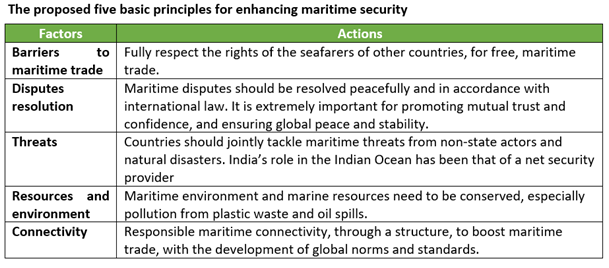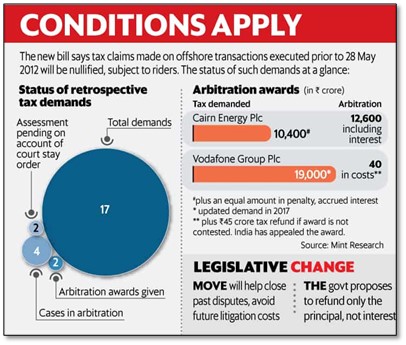Thursday, 12th August 2021
States’ Rights to Specify OBC Groups
In News
The Parliament passed the 127th Constitutional Amendment Bill, 2021, restoring States’ rights to specify OBC groups.
About the News
- Objective: The Bill seeks to clarify some provisions in the 102nd Constitutional amendment Bill to restore the power of the states and union territories to prepare their own list of socially and educationally backward classes (SEBC).
- The 102nd Constitution Amendment Act of 2018 gave constitutional status to the NCBC, and empowered the President to notify the list SEBCs for any state or union territory.
- The amendment: As per this amendment, the “state list” will be taken out of the ambit of the president and will be notified by the state assembly. The NCBC will retain the powers to look at complaints about the implementation of schemes that are meant for OBCs.
- The President may notify the list of socially and educationally backward classes only of the central government.
- Amended Articles: This Bill amends Articles 342 A (clauses 1 and 2) and introduces a new clause - 342 A (3) specifically authorising states to maintain their state list.
- There will be a consequential amendment in Articles 366(26c) and 338B (9). The states will thus be able to directly notify SEBCs without having to refer to the National Commission for Backward Classes (NCBC).
- Significance of the Bill
- In the absence of this amendment, the state lists would have been abolished, around 671 OBC communities would have lost access to reservations in educational institutions and jobs, adversely impacting nearly one-fifth of the total OBC communities.
- Also, there has never been an official count of SEBCs in India and the Mandal Commission estimated the share of OBCs in India’s population to be 52 per cent. So, state list will be able to include SEBCs and OBCs count.

Sources:
Carbon-cycle feedbacks
In News
The IPCC AR6 report has made projections about the impact of carbon-cycle feedbacks on global warming.
About the News
- AR6 says that there is high confidence that warming will lead to carbon release from the thawing of permafrost, but the timing and size of emissions are difficult to determine.
- The report shows that the carbon-cycle feedbacks could push atmospheric concentrations of greenhouse gases much higher meaning more warming from the same level of emissions.
- The report also looks at how much hotter the world will get in the longer term, with warming by 2300 potentially reaching levels “that have not been seen in millions of years”.
What is Carbon-cycle Feedback?
- Meaning: The carbon cycle is the collection of processes that sees carbon exchanged between the atmosphere, land, ocean and the organisms they contain. “Feedbacks” refer to how these processes could change as the Earth warms and atmospheric CO2 concentrations rise.
- Changes in carbon cycle behaviour as the Earth warms is an example of a climate feedback – a self-reinforcing change to the Earth’s temperature from a secondary factor.
- Variable effect: Not all of these feedbacks will necessarily act to increase temperature, however. CO2 fertilisation effects can lead to additional vegetation growth, sequestering more carbon. Nitrogen cycle changes can also enhance land uptake of carbon.
- Example: There are a number of other carbon cycle feedbacks that apply to the terrestrial biosphere. They vary anywhere from a strong negative to a strong positive feedback. Among them are (a) warmer land increasing microbial activity in soils, which releases CO2 (a small positive feedback), (b) increased plant productivity due to higher CO2 levels (a strong negative feedback).
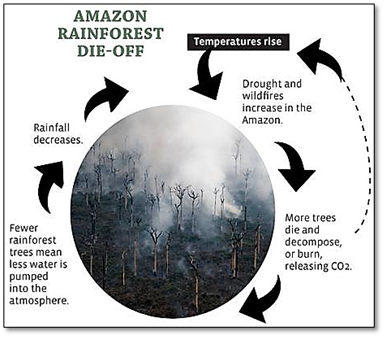
Implications of carbon-cycle feedbacks on future warming
- Carbon-cycle feedbacks alter the land and ocean carbon inventories and thus, act to reduce or enhance the increase in atmospheric CO2 from carbon emissions.
- In many complex systems, multiple feedbacks are operating. Example, in the Arctic where a change to a warmer climate is happening more than twice as fast as anywhere else in the world. Multiple feedbacks are at work in this complex Arctic system, both amplifying and slowing down changes.
Sources:
Monetary Policy Report
In News: The RBI has unveiled its bi-monthly Monetary Policy Report (MPR) for the month of August 2021.
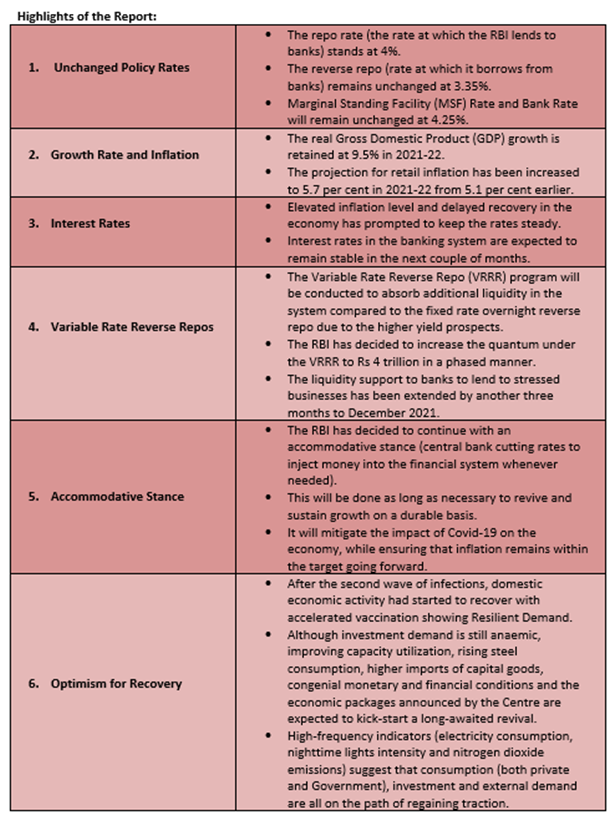
Source:
- RBI holds rates steady, inflation forecast now close to 6% limit
- Explained: What does RBI move to keep rates steady, hike inflation target mean?
- Monetary Policy
- Press Release
- RBI Monetary Policy Statement Report - August 2021
- RBI avoids policy response to rising inflation to support economic recoveryRBI maintains status quo on key policy ratesRepo rate remains unchanged at 4%; GDP growth projection for FY 2021-22 retained at 9.5%
The Gilgit-Baltistan Conundrum
In News
Pakistan has finalised draft legislation to incorporate Gilgit-Baltistan, the region known before 2009 as Northern Areas, as a province of the country.
About the News
- This decision will impact the residents of Gilgit-Baltistan significantly. They will now become Pakistani citizens. Provincial status for Gilgit-Baltistan will also have implications for India and China, as well.
- Currently, the territory is nominally governed by the legislative assembly, but that body has few legal powers and the region remains largely governed directly by the federal government in Islamabad.
- Pakistan's intention to declare Gilgit-Baltistan its fifth province has received mixed reactions from both sides of the Kashmir border.
- Kashmiri nationalists, who seek an independent state, denounced the move, fearing it would make their demand for a united Jammu and Kashmir irrelevant.
- Islamabad's earlier attempts to grant Gilgit-Baltistan provincial status have been met with fierce resistance and opposition from various Kashmiri groups.
History of the Gilgit-Baltistan Issue
- Gilgit Scout Rebellion: Gilgit was part of the princely state of Jammu & Kashmir, but was ruled directly by the British, who had taken it on lease from Hari Singh.
- When Hari Singh acceded to India on October 26, 1947, the Gilgit Scouts rose in rebellion, led by their British commander Major William Alexander Brown. The Gilgit Scouts also moved to take over Baltistan, which was then part of Ladakh, and captured Skardu, Kargil and Dras. In battles thereafter, Indian forces retook Kargil and Dras in August 1948.
- Revolutionary Council of Gilgit-Baltistan: On November 1, 1947, a political outfit called the Revolutionary Council of Gilgit-Baltistan had proclaimed the independent state of Gilgit-Baltistan. On November 15, it declared it was acceding to Pakistan, which accepted the accession only to the extent of full administrative control, choosing to govern it directly under the Frontier Crimes Regulation.
- The “AJK” government: Following the India-Pakistan ceasefire of January 1, 1949, Pakistan in April that year entered into an agreement with the “provisional government” of “Azad Jammu & Kashmir” — parts that had been occupied by Pakistani troops and irregulars — to take over its defence and foreign affairs. Under this agreement, the “AJK” government also ceded administration of Gilgit-Baltistan to Pakistan.
- Pakistan’s constitution: In 1974, Pakistan adopted its first full-fledged civilian Constitution, which lists four provinces —Punjab, Sindh, Balochistan and Khyber Pakthunkhwa. Pakistan-Occupied Kashmir (PoK) and Gilgit-Baltistan were not incorporated as provinces.
Strategic importance of the region
- Important Borders: In the far north of Pakistan-controlled territory, Gilgit Baltistan is strategically located. It shares boundaries with Afghanistan’s Wakhan Corridor, China’s Xinjiang Uyghur Autonomous Region, India’s Jammu and Kashmir, and Pakistan’s Khyber-Pakhtunkhwa province, as well as a Pakistan-controlled swathe of territory in western Kashmir that Islamabad refers to as “Azad Kashmir.”
- Mountain ranges: Gilgit-Baltistan is located in the far north of Pakistan, at the intersection between the Himalaya, Karakorum and Hindu Kush mountain ranges. It is home to some of the highest mountain peaks in the world, including K2, the world’s second-highest mountain.
- The CPEC: The area’s strategic importance for India has increased in light of the China-Pakistan Economic Corridor agreement, under which Beijing is investing hugely to develop the area as part of its Belt and Road Initiative, and the concerns of a two-front war after the standoff in Eastern Ladakh in 2020.
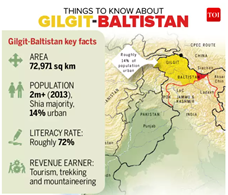
What are the stands of India and Pakistan on the region? Where lies the conflict of Perceptions?
- India’s Stand: India regards Gilgit-Baltistan as Indian Territory. According to the Indian argument, since Gilgit-Baltistan was a part of the former princely state of Jammu and Kashmir, whose Maharaja acceded to India, it is legally India’s.
- Gilgit-Baltistan together with Azad Kashmir is referred to as Pakistan Occupied Kashmir (POK).
- Pakistan’s Stand: Pakistani analysts argue that the people of Gilgit-Baltistan joined Pakistan of their own free will. When the Maharaja signed the Instrument of Accession with India in October 1947 to defend his territory, the Gilgit Scouts mutinied and demanded accession to Pakistan.
- India argues that even if Gilgit-Baltistan was on lease to the British, with the lapse of British paramountcy, Gilgit came under the Maharaja’s rule again. And since the Maharaja signed the Instrument of Accession with India, Gilgit-Baltistan is an integral part of the Indian Union.
- The Dilemma: In the seven decades since Gilgit-Baltistan came under Pakistani occupation, it has remained under Islamabad’s control, while India continues to lay claim to it.
- Official maps of Pakistan include this region but it finds no mention in the Pakistani constitution. Residents of Gilgit-Baltistan are not citizens of Pakistan but they pay taxes to the Pakistan government.
- Although a 2009 ordinance provided for self-rule in Gilgit-Baltistan, it is tightly controlled by Islamabad, with few powers vested in the Gilgit-Baltistan assembly.
What do the local people want?
- Few section of G-B have been demanding for years that it be made a part of Pakistan, they do not have the same constitutional rights Pakistanis have. There is a small movement for independence, but it has very little traction.
- There is limited connect with India. Some have in the past demanded a merger with PoK, but the people of G-B have no real connect with Kashmir either. They belong to several non-Kashmiri ethnicities, and speak various languages, none of these Kashmiri.
- A majority of the estimated 1.5 million G-B residents are Shias. They believe that the extremist sectarian militant atrocities from Pakistan that target Shias, will fade away once they are part of the Pakistani federation.
Conclusion
- What makes GB’s conundrum intricate is that, despite 73 years of independence, it is still unable to achieve what it strove for. Various governments in Pakistan have tried in the past to regulate the issues of GB through reforms and executive orders, most recent being plans to give GB provincial status. But the question remains whether the Government of Pakistan can bring GB into the ambit of Pakistan’s constitution.
- Also, any future bilateral conversation with India may be jeopardised following Pakistani assertiveness in the region. In case GB becomes a province, it would have implications on the Indian political scene as well.
Question: Explain the strategic significance of Gilgit-Baltistan region. What is the conflict and solution to the crisis?
Sources:
- Explained: Here’s why Gilgit-Baltistan matters to India & Pakistan
- Explained: The importance of Gilgit-Baltistan, and why Pakistan has given it provisional province status
- Pakistan's Gilgit-Baltistan 'province': Will it make the Kashmir dispute irrelevant?
- The Complex Calculus Behind Gilgit-Baltistan’s Provincial Upgrade
- The fifth province: “To be or not to be."HISTORY: THE GILGIT-BALTISTAN CONUNDRUM
- Pakistan PM vows to grant provisional status to Gilgit-Baltistan
This Day in History - Phonograph
On August 12, 1877, Phonograph was invented. Phonograph, also called record player, instrument for reproducing sounds by means of the vibration of a stylus, or needle, following a groove on a rotating disc. The invention of the phonograph is generally credited to the American inventor Thomas Edison. By transcribing sound vibrations as a series of tiny pits on the tinfoil surface of a revolving cylinder, this became the first device to play back recorded sound. Phonographs and records were the chief means of reproducing recorded sound at home until the 1980s.

Sources:
Image of the Day - Blob
This is the image of the ‘Blob’, an unclassified organism, which blasted off into orbit to the International Space Station. The Blob will be part of an experiment carried out by astronauts in the ISS, to observe the effects of weightlessness. Appeared on Earth about 500 million years ago, the slime mould defies biology as we know it. The blob has one cell with multiple nuclei and while most organisms reproduce, it does not. While most organisms present two sex types, the Blob has more than 720. The slime mould has no mouth, legs or brain and has a yellowish and spongy mass. It still eats, grows, and moves.
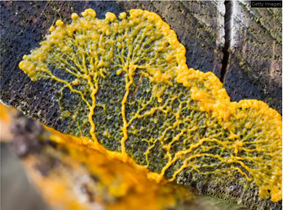
Source:
Ujjwala 2.0 Scheme
- Context: The Prime Minister has launched the second phase of Pradhan Mantri Ujjwala Yojana (PMUY) or Ujjwala 2.0 Scheme.
- PMUY 1 was launched in 2016 to provide only deposit-free LPG connections to the women of poor households.
- Under Ujjwala 2.0, the Union government will distribute about 10 million gas connections to the poor along with a free refill worth over ₹800 and a stove.
- The migrant workers would only be required to submit a self-declaration of their residential address to get the gas connection.
- People can apply online through the dedicated portal or common service centres, or through local gas agencies belonging to the state-run oil marketing companies (OMCs) – Indian Oil Corporation, Bharat Petroleum Corporation Ltd and Hindustan Petroleum Corporation Ltd etc.
- The target beneficiaries were initially selected from the Socio-Economic Caste Census of 2011 (SECC Data) and the scope was later expanded to more categories to include deprived women in poor households.
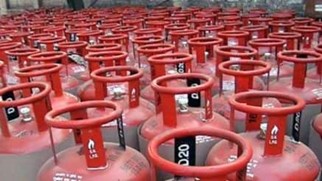
Source:
- Ujjwala scheme 2.0 beneficiaries to get free stove, refill
- Modi launches phase-II of Ujjwala gas connection scheme for the poor
Image Source:
Operation Greens Scheme
- Context: dissemination of useful information regarding the Operation Greens Scheme.
- Operation Greens scheme was launched in 2018 by Ministry of Food Processing Industries.
- The scheme was launched for integrated development of Tomato, Onion and Potato (TOP) value chain.
- Its aims:
- To enhance value realization of TOP farmers
- Reduction in post-harvest losses
- Price stabilization for producer and consumers
- Increase in food processing capacities, value addition etc.
- Setting up of a market intelligence network to collect and collate real time data on demand and supply and price of TOP crops.
- It also promotes Farmer Producers Organizations (FPOs), agri-logistics etc
- The scheme provides for short term intervention by way of providing transportation and storage subsidy of 50% and long-term intervention through value addition projects in identified production clusters with Grant-in-aid of 35% to 70% of eligible project cost subject to maximum of Rs. 50 crore per project.
- The scheme is demand driven and hence state-wise funds are not allocated.
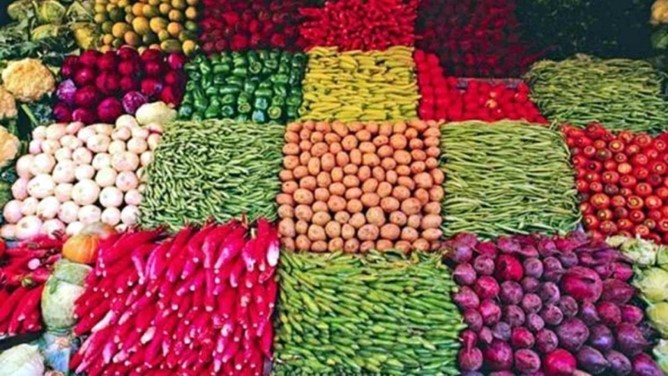
Source:
Image Source:
Marburg Virus
- Context: Guinea has recorded West Africa’s first Marburg virus death.
- Marburg virus disease is a highly virulent disease that causes haemorrhagic fever, with a fatality ratio of up to 88%. It is in the same family as the virus that causes Ebola virus disease.
- The disease had its initial recognition in 1967 after the huge outbreak in Germany and Serbia associated with laboratory work using African green monkeys (Cercopithecus aethiops) imported from Uganda.
- Human infection with the virus disease results from prolonged exposure to mines or caves inhabited by Rousettus bat colonies.
- Marburg can spread through human-to-human transmission via direct contact with the blood, secretions, organs or other bodily fluids of infected people, and with surfaces and materials contaminated with these fluids.
- Symptoms include Headache, vomiting blood, muscle pain to increasingly severe jaundice, inflammation of the pancreas, severe weight loss, liver failure, massive haemorrhaging, and multi-organ dysfunction.
- There is no specific treatment or approved vaccine for Marburg hemorrhagic fever and Supportive hospital therapy can be utilized.
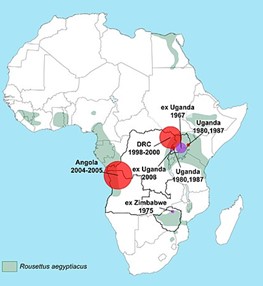
Source:
Image Source:
Krishi Vigyan Kendra
- Context: The Government has made a provision for opening of Krishi Vigyan Kendra (KVK) in each of the rural districts across the country.
- KVK is an integral part of the National Agricultural Research System (NARS) that aims at assessment of location specific technology modules in agriculture and allied enterprises, through technology assessment, refinement, and demonstrations.
- KVKs produce quality technological products (seed, planting material, bio-agents, livestock) and make it available to farmers, organize frontline extension activities, identify, and document selected farm innovations.
- They have been strengthened with other infrastructure facilities like, pulses seed hubs, soil testing kits, micro-irrigation systems, Integrated Farming Systems units, farm machineries and equipment, District Agro-Met Units, etc. during last five years.
- It is 100% financed by Govt. of India and the KVKs are sanctioned to Agricultural Universities, ICAR institutes, related Government Departments and NGOs working in Agriculture.
- A total of 725 KVKs have been established across the country till date.
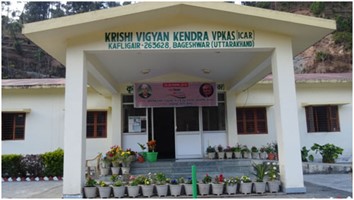
Source:
- About KVK
- Government has made a provision for opening of Krishi Vigyan Kendra (KVK) in each of the rural districts across the country
Image Source:
Why Indian Railways failed to attract private players to run trains
Essence: The article goes into the depth of why India has failed to attract private participation in railway sector. Indian railway wants capital and technology infusion but it doesn’t want to give up control. The private players have to invest in huge proportions with a huge risk of uncertain returns.
India needs to align three strategies- design state of the art stock, have private investment and generate profits. Specifically for technology, India will have to build capacity at research, university and incubator levels to develop sufficient base in the domain.
Why you should read this article?
- To understand the details of railways management and efficiency.
- To assess the parameters responsible for growth of railways in India.
Source:
How not to help discoms
The article talks about various schemes which have been implemented to reduce the losses of power discoms. It compares the newest scheme with the old ones like UDAY and presents why the distribution loss are being incurred. The article also speaks of privatization and innovative mechanisms of funding so that efficiency in power discoms running is gained.
Why you should read this article?
- Compare the govt schemes in power discom sector.
- Understand the state-wise differences in power schemes.
Source:
Monsoon session: India’s parliamentary democracy is in crisis
Essence: The article starts by mentioning the disruptions and the washout of the monsoon session of the parliament. To pass a law the Lok Sabha on an average took 10 minutes and the Rajya Sabha 30 minutes and in many times only the incharge minister spoke on the bill. While the government managed to get all of its legislative agenda done, the opposition failed to hold the government accountable. As this is the fourth consecutive session to be cut short and there is no mechanism to reign in political parties for the conduct of their MPs, the parliament needs to change its rules to give MPs more teeth in questioning the government and empower its committees to increase the stake that MPs have in the effective functioning of the institution, and disincentivize them from disrupting it.
Why you should read this article?
- Functioning of the Parliament is a part of Mains General Studies Paper II.
- The presiding officers of both the houses expressed anguish over the disruptions of the parliament which makes it an important news.
Source:
Israeli woman donates kidney to Gaza boy
Background
The kindergarten teacher from northern Israel, hoped her choice would set an example of generosity in a land of perpetual conflict.
She was spurred by memories of her late grandfather, a Holocaust survivor, who told her to live meaningfully, and by Jewish tradition, which holds that there’s no higher duty than saving a life.
Values Upheld
- Man as an end in itself
- Altruism
- Kindness
Source:
Share the article
Get Latest Updates on Offers, Event dates, and free Mentorship sessions.

Get in touch with our Expert Academic Counsellors 👋
FAQs
UPSC Daily Current Affairs focuses on learning current events on a daily basis. An aspirant needs to study regular and updated information about current events, news, and relevant topics that are important for UPSC aspirants. It covers national and international affairs, government policies, socio-economic issues, science and technology advancements, and more.
UPSC Daily Current Affairs provides aspirants with a concise and comprehensive overview of the latest happenings and developments across various fields. It helps aspirants stay updated with current affairs and provides them with valuable insights and analysis, which are essential for answering questions in the UPSC examinations. It enhances their knowledge, analytical skills, and ability to connect current affairs with the UPSC syllabus.
UPSC Daily Current Affairs covers a wide range of topics, including politics, economics, science and technology, environment, social issues, governance, international relations, and more. It offers news summaries, in-depth analyses, editorials, opinion pieces, and relevant study materials. It also provides practice questions and quizzes to help aspirants test their understanding of current affairs.
Edukemy's UPSC Daily Current Affairs can be accessed through:
- UPSC Daily Current Affairs can be accessed through Current Affairs tab at the top of the Main Page of Edukemy.
- Edukemy Mobile app: The Daily Current Affairs can also be access through Edukemy Mobile App.
- Social media: Follow Edukemy’s official social media accounts or pages that provide UPSC Daily Current Affairs updates, including Facebook, Twitter, or Telegram channels.


